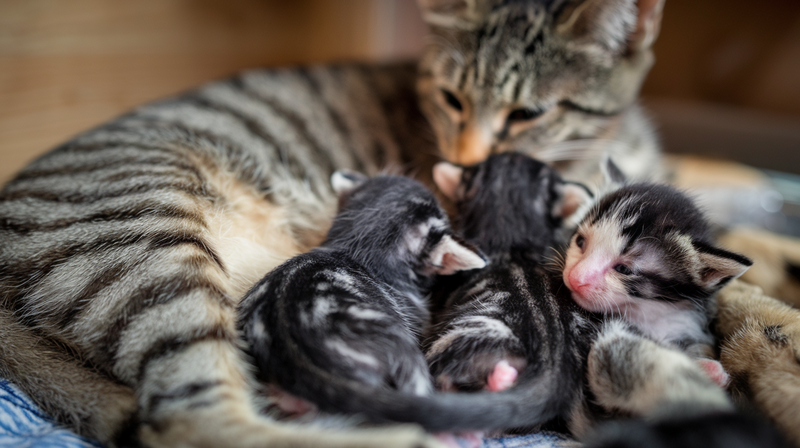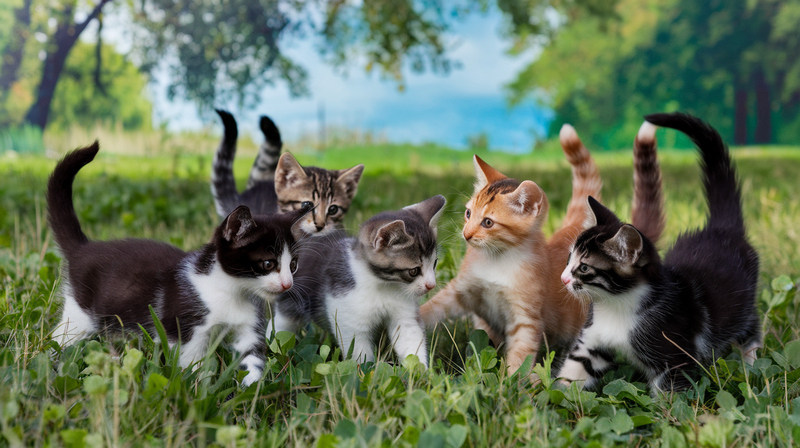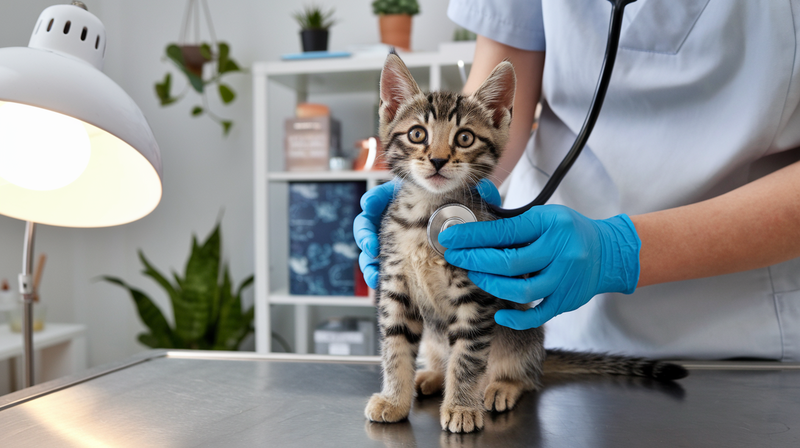Introduction to Kitten Development
Bringing a kitten into your home is an exciting experience, but it also comes with the responsibility of understanding their growth stages and milestones. This knowledge is crucial as it guides you in providing the right care and nutrition, ensuring your kitten develops into a healthy adult cat. From the neonatal period to adulthood, each stage of a kitten's life presents unique challenges and opportunities for growth.

The Early Days: Neonatal and Transitional Stages
In the neonatal stage, which spans the first two weeks of life, kittens are entirely dependent on their mothers for survival. At this time, their eyes and ears are closed, rendering them deaf and blind. They rely on their mother's milk for both nutrition and warmth, underscoring the critical need for maternal care during this period.
As kittens progress into the transitional stage, between two and four weeks, significant developmental changes occur. Their eyes and ears begin to open, leading to improved sensory abilities. This period also marks the emergence of baby teeth and the onset of walking and exploration. Kittens start to interact more with their surroundings, showing curiosity about toys and developing social skills through interactions with their littermates and mother.
Socialization and Independence: The Critical Socialization Stage
The socialization stage, from four to twelve weeks, is a pivotal time for kittens. During this phase, they become more independent and develop enhanced motor skills and coordination. Play behavior is crucial for their social and physical development, as they engage in activities like wrestling, pouncing, and exploring their environment. This stage is also when kittens begin to form social bonds with humans and other animals, learning essential interaction skills that will last a lifetime.

Growing Up: Juvenile and Adolescent Stages
In the juvenile stage, from three to six months, kittens continue to hone their skills and undergo physical development. They begin replacing baby teeth with permanent ones and become more proficient at grooming themselves. As they approach sexual maturity, their energy levels and curiosity peak, marking a time of significant growth.
The adolescent stage, which spans from six to eighteen months, is characterized by further physical and behavioral changes. Kittens reach full dental maturity and may exhibit territorial instincts, such as marking or increased aggression, if not spayed or neutered. While their physical growth slows, behavioral maturity is still evolving, presenting challenges like testing boundaries and potential rebellion.
Influential Factors in Kitten Growth
Several factors influence a kitten's growth rate. Genetics play a crucial role, with different breeds exhibiting varying growth patterns and maturity ages. For instance, Siamese cats often reach maturity earlier than Persian cats. Nutrition is another critical factor; a balanced diet is essential for healthy growth, while poor nutrition can lead to obesity or stunted development. Additionally, the timing of spaying or neutering can affect a cat's hormonal balance and potentially influence their size.
Nutrition Transition: From Kitten to Adult Food
Transitioning from kitten food to adult cat food is a significant milestone in a kitten's life. Kitten food is formulated with higher calories, fat, and protein to support rapid growth, as well as a specific balance of calcium and phosphorus for bone development. Knowing when to make this transition is vital to ensure your cat receives the appropriate nutrients for their body's needs. Consulting with a veterinarian can help determine the best time and type of adult cat food to introduce.
Health and Wellness: Veterinary Care Essentials
Veterinary care is essential for kittens, differing significantly from adult cat care. Kittens require regular vaccinations every three to four weeks until they are about 16 to 18 weeks old. Continuing regular check-ups during their first year helps monitor their body condition and growth. Once they reach adulthood, annual wellness exams and preventative care become sufficient to maintain their health.

Dental Health: A Lifelong Commitment
Dental care is vital from kittenhood through adulthood. While younger kittens generally have a lower rate of dental issues, establishing a routine of daily tooth-brushing is crucial. As cats age, the prevalence of tooth and gum disease increases, with up to 90% of cats older than four years experiencing dental problems. Early attention to dental health can prevent these issues from developing.
Supervision and Activity Needs
As kittens mature, their need for constant supervision decreases, yet regular exercise and mental stimulation remain important. Guidelines suggest that kittens younger than four months should not be left alone for more than four hours, while those aged five to six months can be left alone for five to six hours. Older kittens and adult cats can be left alone for longer periods, but they still require companionship and care to thrive.
Predicting Adult Size and Growth Monitoring
Predicting a kitten's adult size can be done by considering their parents' sizes and the care they receive. Veterinary assessments, including X-rays of growth plates, can help monitor development and predict final body size. Growth plates typically close around four to five months of age, providing a useful indicator of when a kitten has reached their adult size.
Conclusion: Supporting Healthy Development
Understanding the developmental stages of a kitten and the factors influencing their growth is crucial for providing the right care and nutrition. By recognizing when to transition from kitten food to adult food, ensuring regular veterinary check-ups, and maintaining good dental care, you can help your kitten grow into a healthy and happy adult cat. Embracing these responsibilities ensures a fulfilling life for your feline companion, filled with health, happiness, and companionship.






